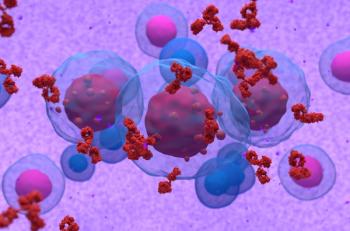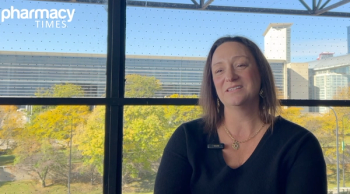
FDA Authorizes COVID-19 Booster Doses, Heterologous Doses
The FDA has authorized the expanded use of COVID-19 booster doses in eligible populations, including a single dose of the Moderna vaccine and the Johnson & Johnson vaccine.
The FDA has expanded the use of a booster dose for COVID-19 in eligible populations, including a single booster dose of the Moderna vaccine and a single dose of the Johnson & Johnson vaccine. In addition, FDA officials authorized each of the available COVID-19 vaccines as a heterologous booster dose following completion of the primary vaccination with a different vaccine.1
With this announcement, individuals 65 years and older or ages 18 to 64 at high risk of COVID-19 can receive a single booster dose of the Moderna vaccine at least 6 months after completion of the primary series. Individuals ages 18 years and older can receive a single dose of the Johnson & Johnson vaccine at least 2 months after primary vaccination.1
“Today’s actions demonstrate our commitment to public health in proactively fighting against the COVID-19 pandemic,” said acting FDA Commissioner Janet Woodcock, MD, in a press release. “As the pandemic continues to impact the country, science has shown that vaccination continues to be the safest and most effective way to prevent COVID-19, including the most serious consequences of the disease, such as hospitalization and death.”1
Authorization of the single 50 µgbooster dose from Moderna is based on immune response data from 149 trial participants in the original clinical studies who received a booster dose at least 6 months after their second dose. According to the press release, the antibody response of these participants against SARS-CoV-2 29 days after the booster dose demonstrated a significant response.1
In a separate trial assessing the safety of the booster dose, investigators evaluated adverse effects (AEs) following administration in 171 participants who were followed for an average of approximately 6 months. The most commonly reported AEs were pain at the injection site, tiredness, headache, muscle or joint pain, chills, swollen lymph nodes in the injection arm, nausea and vomiting, and fever. Notably, swollen lymph nodes in the underarm were observed more frequently following the booster dose than after the primary 2-dose series.1
“This emergency use authorization is supported by robust clinical evidence that a 50-µg booster dose induces a strong immune response against COVID-19,” said Stephane Bancel, CEO of Moderna, in a press release.2
Authorization of the Johnson & Johnson COVID-19 vaccine is based on immune response data from 39 trial participants, including 24 who were 18 through 55 years of age and 15 participants who were 65 years of age and older. Participants received a booster dose approximately 2 months after their first dose and the results demonstrated a booster response, according to the FDA press release.1
Approximately 9000 clinical trial participants have received 2 doses of the Johnson & Johnson vaccine and, of these, approximately 2700 have had at least 2 months of follow-up assessing safety after administration of the booster. Analyses from these studies did not identify new safety concerns.1
In addition to the authorization of Moderna and Johnson & Johnson’s booster vaccines, officials with the FDA also authorized the use of mix and match booster doses for the currently available vaccines. According to the press release, FDA experts determined that the known and potential benefits of the use of a single heterologous booster dose outweigh the known and potential risks of their use in eligible populations.1
“Our data support a schedule that provides benefit to individuals based on their risks associated with COVID-19, whether administered as a single dose for an efficient response to the pandemic, or as a booster dose after at least 2 months—to protect against symptomatic COVID-19,” said Paul Stoffels, MD, chief scientific officer of Johnson & Johnson, in a press release from the company. “We also welcome the FDA’s decision to include a heterologous boosting option as part of this authorization.”3
Importantly, earlier analyses from the FDA and CDC suggested an increased risk of thrombocytopenia syndrome (TTS) following administration of the Johnson & Johnson vaccine. Individuals who developed symptoms 1 to 2 weeks after vaccination and reporting of TTS has been highest in women ages 18 through 49. Safety surveillance has also suggested an increased risk of Guillain Barre syndrome within 42 days of vaccine administration.1
A single booster dose of any available COVID-19 vaccine can be administered as a heterologous booster dose following completion of primary vaccination with a different vaccine. Notably, the eligible populations and dosing intervals for a heterologous booster dose are the same as those authorized for a booster dose of the vaccine used for the primary vaccination.1
For example, the press release said that a patient who received the Johnson & Johnson vaccine for their primary vaccination can receive either the Johnson & Johnson, Moderna, or Pfizer booster 2 months later.1
“We will work to accrue additional data as quickly as possible to further assess the benefits and risks of the use of booster doses in additional populations and plan to update the health care community and public with our determination in the coming weeks,” said Peter Marks, MD, PhD, director of the FDA Center for Biologics Evaluation and Research, in the press release.1
REFERENCES
- Coronavirus (COVID-19) Update: FDA Takes Additional Actions on the Use of a Booster Dose for COVID-19 Vaccines. News release. FDA; October 20, 2021. Accessed October 21, 2021.
https://www.fda.gov/news-events/press-announcements/coronavirus-covid-19-update-fda-takes-additional-actions-use-booster-dose-covid-19-vaccines - Moderna Announces FDA Authorization of a Booster Dose of Moderna’s COVID-19 Vaccine in the US. News release. Moderna; October 20, 2021. Accessed October 21, 2021.
https://investors.modernatx.com/news-releases/news-release-details/moderna-announces-fda-authorization-booster-dose-modernas-covid - Johnson & Johnson COVID-19 Vaccine Booster Shot Authorized for Emergency Use by US FDA. News release. Johnson & Johnson; October 20, 2021. Accessed October 21, 2021.
https://www.jnj.com/johnson-johnson-covid-19-vaccine-booster-shot-authorized-for-emergency-use-by-u-s-fda
Newsletter
Stay informed on drug updates, treatment guidelines, and pharmacy practice trends—subscribe to Pharmacy Times for weekly clinical insights.



















































































































































































































